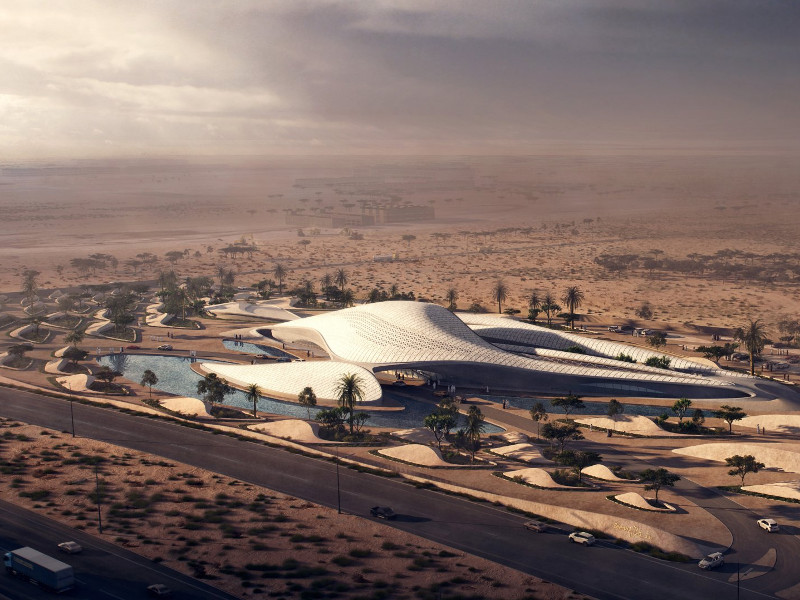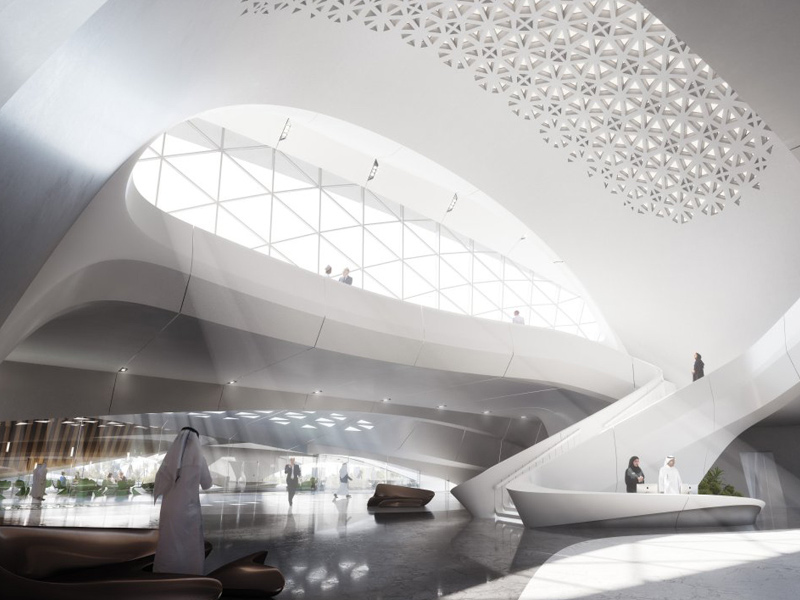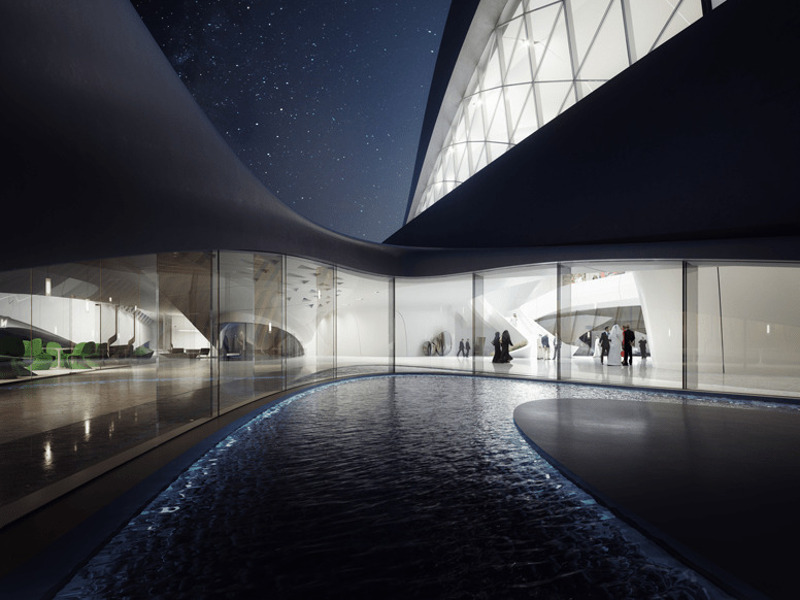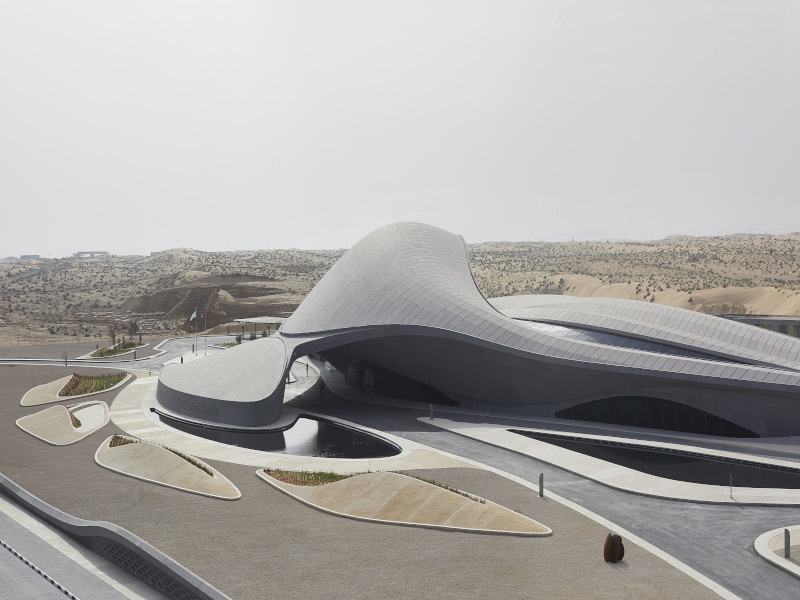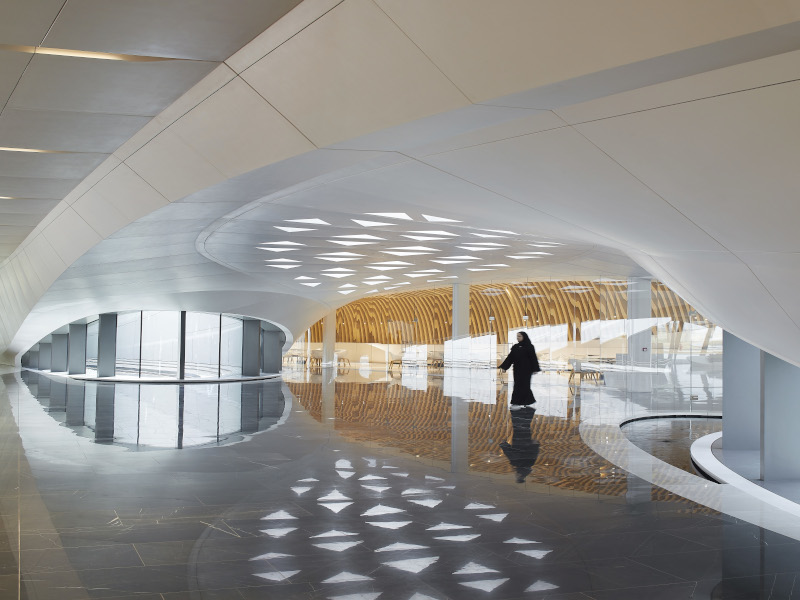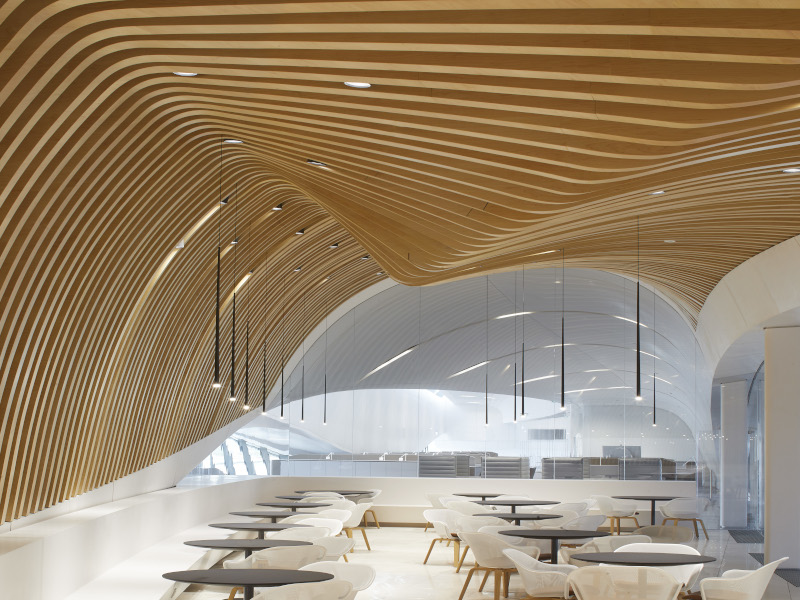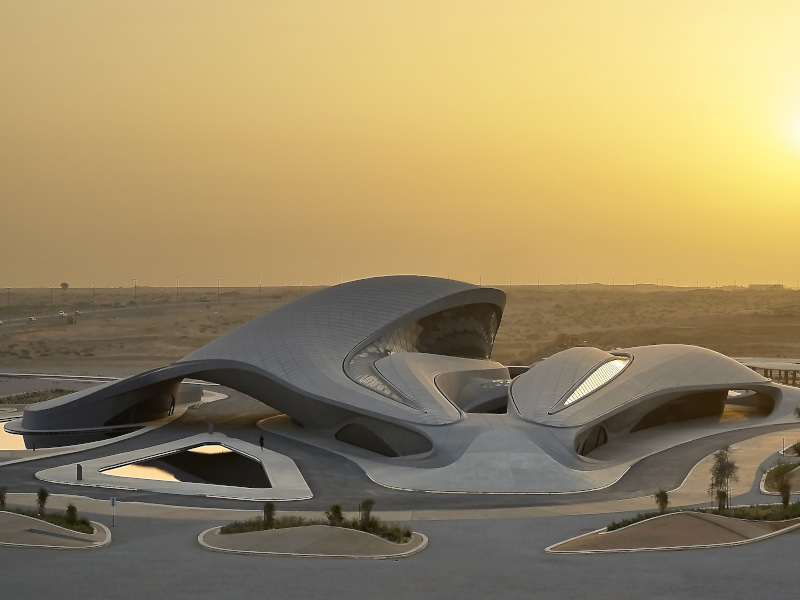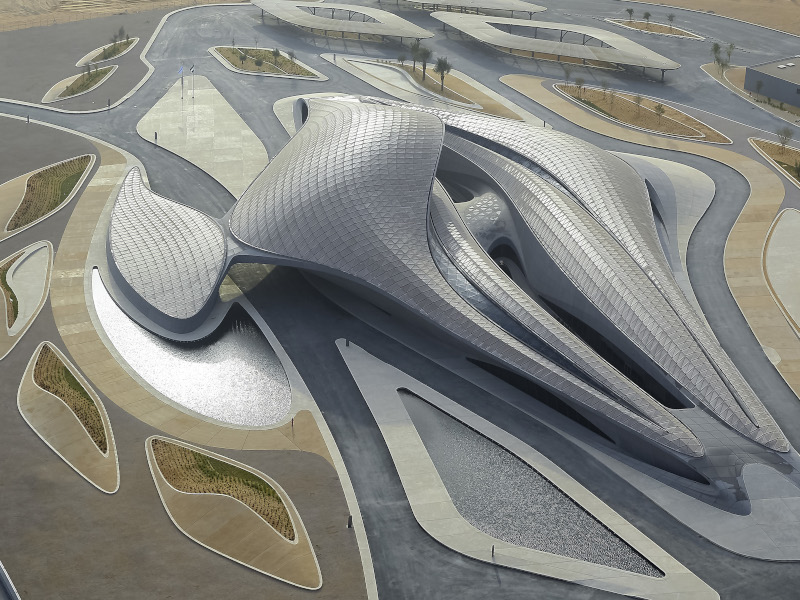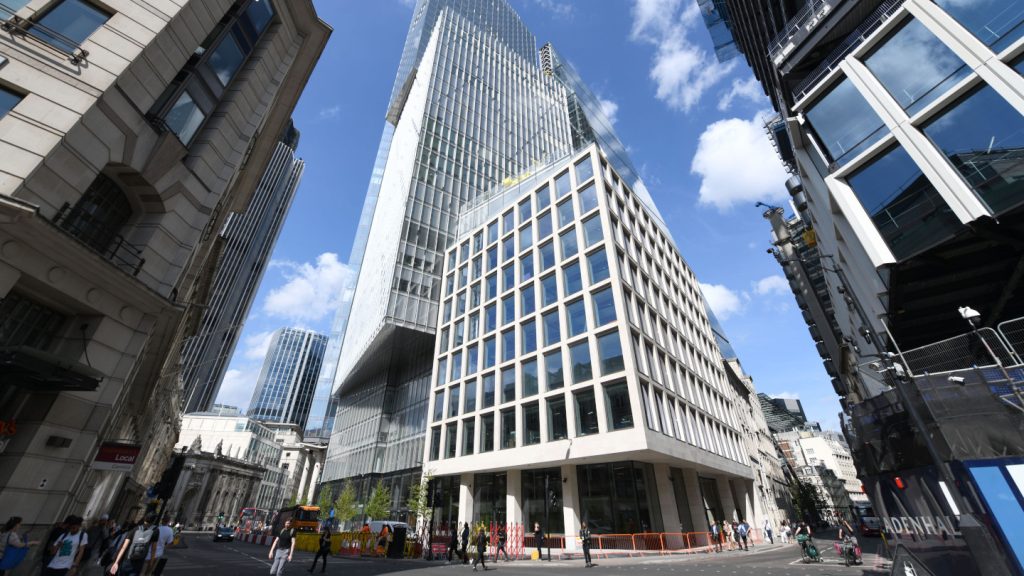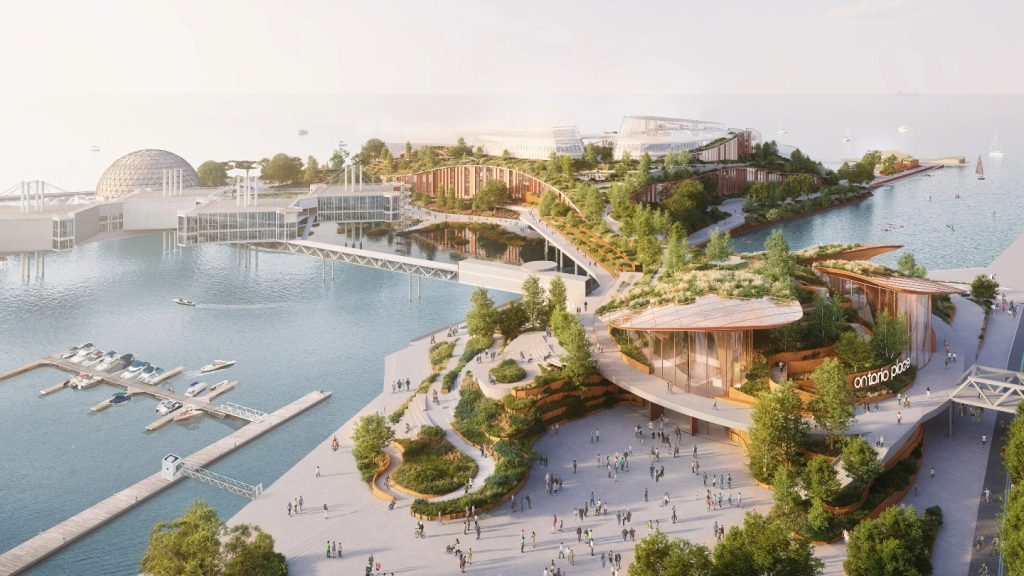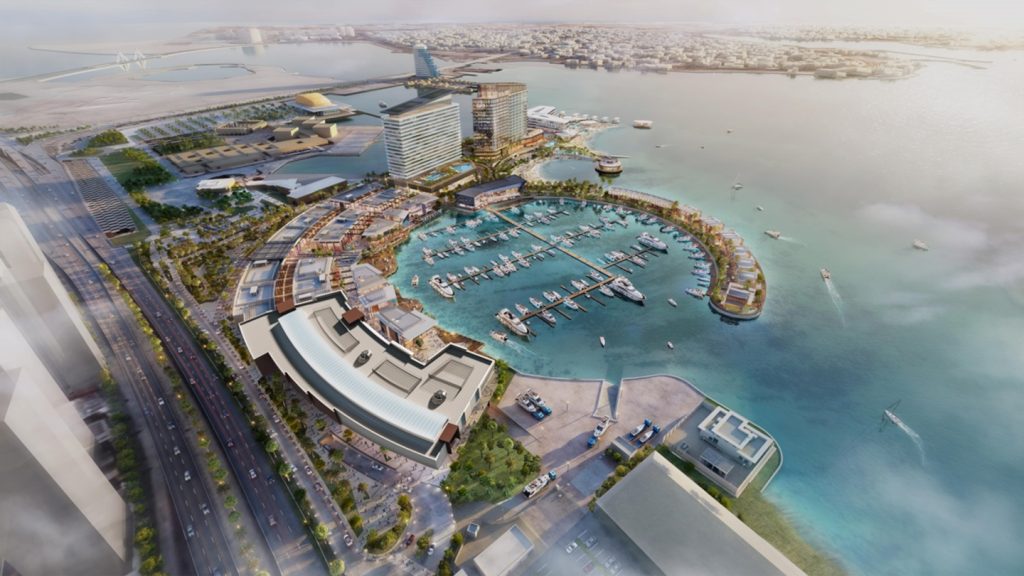The new headquarters of environmental company Bee’ah is located in Sharjah, UAE. It is designed as a futuristic building with a complex structure.
Construction of the headquarters started in 2014 and the site was officially opened in March 2022.
The new headquarters building serves as a centre for the management and administration of the company’s varied business interests, which include recycling, waste management, energy, environmental consulting, technology, education, and green mobility.
The building won the 2018 Green Building Award at the Gulf Sustainability and CSR Awards.
Bee’ah headquarters design details
Bee’ah headquarters features a green design concept by exhibiting an open, fluid and eco-friendly approach.
Located on a 93,000m² site, the building has a floor area of 9,000m² and comprises a series of dunes leading to two central dune-shaped structures that blend with the desert landscape.
The curvilinear features of the headquarters are inspired by the intersection of sand dunes. The first of the two dune-shaped structures houses the public and management sections of the company.
The administrative section has been designed in the second dune. The facilities in the two dunes include an entrance lobby, auditorium, visitor’s educational centre and gallery, departmental and management offices, and staff cafe.
The building’s two dunes are connected by a central courtyard that features a 23m-long, 17m-wide and 15.3m-high concrete dome roof, which enhances the natural ventilation and allows maximum passive sunlight into the buildings.
Construction and materials used
The construction of the headquarters was divided into a series of components and layers to reduce complexity. It includes a series of prefabricated structural steel ribs, which simplified the construction process and enabled a reliable prediction of costs and scheduling.
Lightweight glass-fibre reinforced concrete (GRC) was used in the external cladding and roof of the facility to reduce solar absorption and maximise thermal emittance. Approximately 4,000 GRC panels weighing 100kg each were used for the construction. The roof topping-out ceremony was held in December 2017.
Use of AI and smart building technology in Bee’ah headquarters
Bee’ah headquarters is one of the world’s first buildings to incorporate artificial intelligence (AI) and smart building solutions from Microsoft. It incorporated systems and devices to optimise energy, digital workspaces, and visitor and security management through AI-powered facial recognition systems.
The building features AI-powered personal concierge services, which enable visitors and employees to book appointments, locate meeting rooms and perform daily tasks.
The rooms also feature state-of-the-art collaboration tools for both on-site and remote work environments.
Sustainable features of Bee’ah headquarters
The active and passive design approach used for the project emphasises a zero-energy strategy by incorporating insulated glazing panels, exterior finishes that reflect sunlight and appropriate positioning of windows to reduce solar heat gain.
A photovoltaic solar plant was installed to accommodate the high energy demand during the summer months. It is supplemented by Tesla-supplied battery storage system for night-time loads. Additional power requirements are met through other low-carbon sources such as the conversion of municipal waste into energy.
More than 90% of the materials used for the building construction, including aggregate and steel, were locally sourced and recycled. Further environmentally friendly practices such as greywater recycling, rainwater harvesting and water-efficient smart landscaping are also incorporated.
The building features an optimised layout of lights and extensive use of LED light fittings to ensure minimal energy consumption during night-time.
The active and passive efficient energy practices incorporated in the building are expected to reduce energy consumption by 30%.
The building has achieved BREAM Outstanding and LEED Platinum certifications.
Contractors involved
Zaha Hadid Architects (ZHA) was selected to design the Bee’ah headquarters in 2013, following an international design competition.
DSA Architects International, an architectural consultancy and management service provider; and, engineering consultant Bin Dalmouk served as the local architects.
Al Futtaim Construction was the main contractor for the project.
ACPV Architects provided interior design services while urban planning company Francis Landscape was responsible for the landscape architecture.
Consultancy firm BuroHappold Engineering was appointed as the structural and facade engineer for the project while environmental design consultancy Atelier Ten was the environmental design consultant.
Formwork and scaffolding company PERI supplied customised formwork and shoring solutions.
Consultancy firm Gardiner & Theobald provided cost consulting services.
AESG, a specialist consultancy and commissioning company, performed the project’s social and environmental impact assessment.
Technology companies Microsoft and Johnson Controls were contracted to provide smart building solutions for the project, while Evoteq, a technology solutions provider, was appointed as the technical project manager.
Real-estate development company Matthews Southwest served as the project manager for the project.
Other suppliers involved in the project included Al Futtaim Carillion, an electrical and electronics manufacturing company; 3S Lighting Solutions, a lighting solutions provider; UniFor, an office furniture manufacturer; and Tecfire, a manufacturer of glass protection systems.
UK-based architectural ironmonger Allgood, as well as Euro Systems, an interior and exterior solutions provider; Reflex Winkelmann, a heating and water supply technology company; and Guthrie Douglas, a blinds and shading systems supplier, are also involved in the project.

